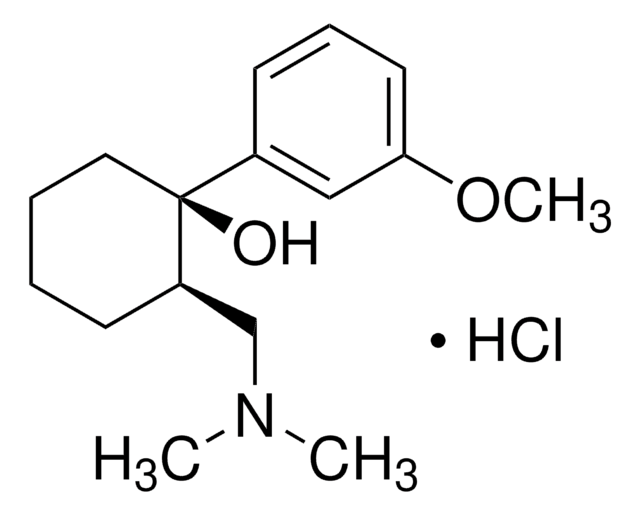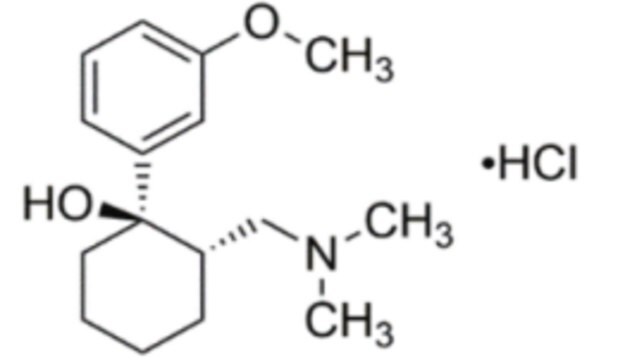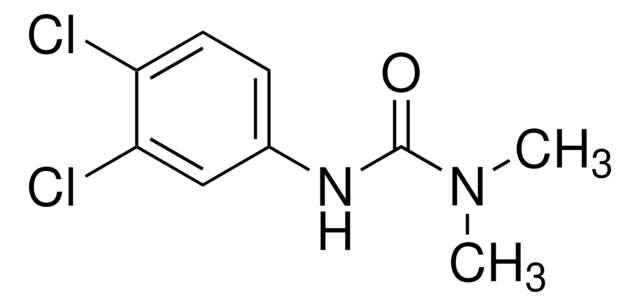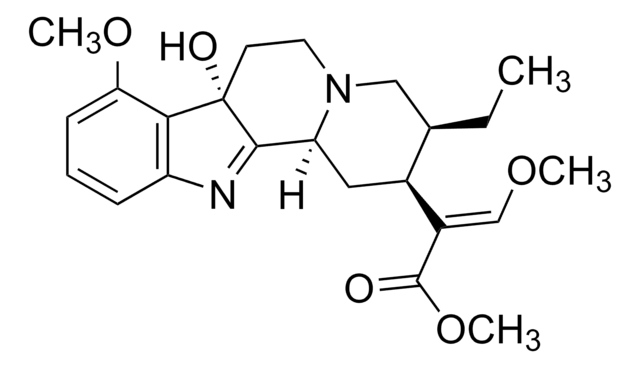42965
Tramadol hydrochloride
≥99.0% (HPLC)
Synonym(s):
Tramadol HCl, (±)-cis-2-(Dimethylaminomethyl)-1-(3-methoxyphenyl)cyclohexanol hydrochloride
About This Item
Recommended Products
Assay
≥99.0% (HPLC)
form
powder
drug control
USDEA Schedule IV
mp
178-181 °C
SMILES string
Cl.COc1cccc(c1)[C@@]2(O)CCCC[C@@H]2CN(C)C
InChI
1S/C16H25NO2.ClH/c1-17(2)12-14-7-4-5-10-16(14,18)13-8-6-9-15(11-13)19-3;/h6,8-9,11,14,18H,4-5,7,10,12H2,1-3H3;1H/t14-,16+;/m1./s1
InChI key
PPKXEPBICJTCRU-XMZRARIVSA-N
Looking for similar products? Visit Product Comparison Guide
Application
Biochem/physiol Actions
Signal Word
Danger
Hazard Statements
Precautionary Statements
Hazard Classifications
Acute Tox. 3 Oral - Aquatic Chronic 2 - STOT SE 3
Target Organs
Central nervous system
Storage Class Code
6.1C - Combustible acute toxic Cat.3 / toxic compounds or compounds which causing chronic effects
WGK
WGK 2
Flash Point(F)
Not applicable
Flash Point(C)
Not applicable
Personal Protective Equipment
Choose from one of the most recent versions:
Already Own This Product?
Find documentation for the products that you have recently purchased in the Document Library.
Customers Also Viewed
Chromatograms
application for HPLCOur team of scientists has experience in all areas of research including Life Science, Material Science, Chemical Synthesis, Chromatography, Analytical and many others.
Contact Technical Service






